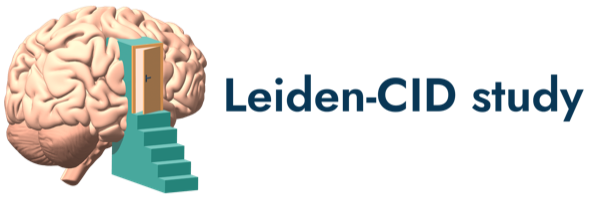8 measures found
-
measure Self-Report of Aggression and Social Behavior Measure (SRASBM)
Study: RADAR Mode of collection: SelfAdministeredQuestionnaire Available measurements: Old Cohort RO - W5 RO - W6 RO - W7 RO - W8 RO - W10 RO - W11
Young Cohort RY - W1 RY - W2 RY - W3 RY - W4 RY - W5 RY - W6 RY - W7 RY - W8The Self-Report of Aggression and Social Behavior Measure (SRASBM) assesses perpetrators and victims of proactive and reactive forms of overt and relational aggression. It includes nine subscales: Physical aggression total, Physical aggression proactive ("I try to get what I want by physically threatening someone."), Physical aggression reactive ("When...Created October 17, 2024 • Updated October 20, 2024 -
measure Direct Indirect Aggression Inventory (DIAS)
Study: RADAR Mode of collection: SelfAdministeredQuestionnaire Available measurements: Old Cohort RO - W1 RO - W2 RO - W3 RO - W4 RO - W5 RO - W9The Direct Indirect Aggression Inventory (DIAS) assesses self-reported agression with the instruction "If you’re angry or mad at someone in class, what do you do?" with three subscales: 1) Direct Aggresion with items such as "I use cusses for the other whenever I can.", 2) Indirect Aggression with items such as "I try to irrritate the other to the point...Created October 17, 2024 • Updated October 20, 2024 -
measure Victimization
Study: RADAR Mode of collection: SelfAdministeredQuestionnaire Available measurements: Old Cohort RO - W5 RO - W6 RO - W7 RO - W8 RO - W9
Young Cohort RY - W1 RY - W2 RY - W3 RY - W4 RY - W5 RY - W6Victimization assesses the degree to which adolescents have been subject to others' delinquent and aggressive behaviors as self-report scale (based on Nieuwbeerta, 2002).Created October 17, 2024 • Updated October 20, 2024 -
measure Social Network Aggression Task (SNAT)
Study: L-CID Mode of collection: MeasurementsAndTests Behavioral/cognitive task Available measurements: Early Childhood Cohort ECC - T5
Middle Childhood Cohort MCC - T1 MCC - T3 MCC - T5 MCC - T7The Social Network Aggression Task (SNAT) aims to measure behavioral aggression following social feedback, by giving the child an opportunity to respond aggressively in response to different types of feedback provided by unknown peers.Created October 17, 2024 • Updated October 20, 2024 -
measure Social Emotional Questionnaire (SEQ)
Study: L-CID Mode of collection: SelfAdministeredQuestionnaire Available measurements: Middle Childhood Cohort MCC - T5-Covid MCC - T6The Social Emotional Questionnaire (SEQ; Sociaal Emotionele Vragenlijst [SEV]) consists of 72 items and 4 subscales divided in several topics that assess social-emotional problems of the child. Each subscale is designed to assess distinct aspects of the participants' behavior and emotions. They include Attention Deficit Disorder (ADD), which evaluates...Created October 17, 2024 • Updated October 20, 2024 -
measure Strengths and Difficulties Questionnaire (SDQ)
Study: L-CID Mode of collection: SelfAdministeredQuestionnaire Available measurements: Early Childhood Cohort ECC - T1 ECC - T2 ECC - T3 ECC - T4 ECC - T5 ECC - T6 ECC - T6-Covid
Middle Childhood Cohort MCC - T1 MCC - T2 MCC - T3 MCC - T4 MCC - T5 MCC - T5-Covid MCC - T6 MCC - T7The Strengths and Difficulties Questionnaire (SDQ) is a brief questionnaire for assessing the psychosocial adjustment of children and adolescents. Versions are available for parents and teachers of 4- to 16-year-olds, and a nearly identical version can be completed independently by 11- to 16-years olds. The SDQ differs from related instruments in that it...Created October 17, 2024 • Updated October 20, 2024 -
measure Strengths and Difficulties Questionnaire (SDQ)
Study: YOUth Mode of collection: SelfAdministeredQuestionnaire Available measurements: Baby and Child 3 years 6 years
Child and Adolescent 9 years 12 yearsThe Strengths and Difficulties Questionnaire (SDQ) is a brief questionnaire for assessing the psychosocial adjustment of children and adolescents. Versions are available for parents and teachers of 4- to 16-year-olds, and a nearly identical version can be completed independently by 11- to 16-years olds. The SDQ differs from related instruments in that it...Created October 17, 2024 • Updated October 20, 2024 -
measure Bullying and Victimization
Study: YOUth Mode of collection: SelfAdministeredQuestionnaire Available measurements: Baby and Child 6 years
Child and Adolescent 9 years 12 yearsBullying and Victimization assesses whether the child has been a victim of bullying or has bullied others. The questionnaire consists of 8 items asking whether the child has been bullied in general, verbally (laughed or yelled at), physically (spitting, kicking, pushing), and relationally (ignored, gossipped about or excluded), or has bullied others in...Created October 17, 2024 • Updated October 20, 2024



